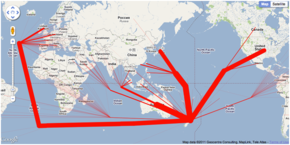I recall last years strategic defence policy statement claimed to have laid out a clear set of principles underlying the Government's expectations of the Defence Force for the
first time. This appears to support the above statement that defence policy was previously/is currently(?) somewhat muddled.
The principles roles laid out in that document are as follows:
- Defend New Zealand’s sovereignty and territory, and contribute to protecting New Zealand’s critical lines of communication.
- Contribute to national, community and environmental wellbeing and resilience, and whole-of-government security objectives.
- Meet New Zealand’s commitments to its allies and partners.
- Support New Zealand’s civilian presence in the Ross Dependency of Antarctica, and work with other agencies to monitor and respond to activity in the Southern Ocean.
- Conduct a broad range of operations in the South Pacific, including leading operations when necessary, to protect and promote regional peace, security and resilience.
- Make a credible contribution in support of peace and security in the Asia-Pacific region, including in support of regional security arrangements.
- Protect New Zealand’s wider interests by contributing to international peace and security and the international rules-based order.
- Contribute to advancing New Zealand’s international relationships.
- Work with other agencies to monitor and understand New Zealand’s strategic environment.
- Be prepared to respond to sudden shifts in the strategic environment.
This is a sound foundation in my opinion, and seems to support an expansion of capabilities in some areas (i.e. an AOPV for the Southern Ocean, though this was also flagged as part of the previous capability review).
Ron Mark seems to have gone some way in laying out a clearer set of expectations of the NZDF, and the significant additional funding he secured for his department in the latest budget is likely a result of this. I am looking forward to seeing what the DCP has to say tomorrow. Hopefully it builds on his previous successes.

